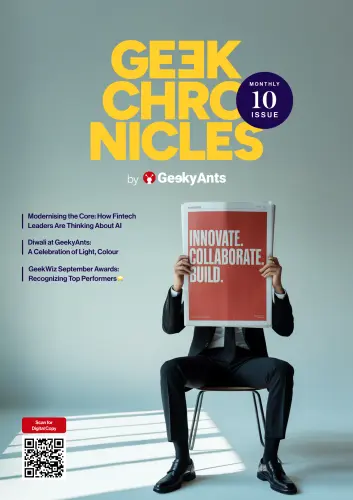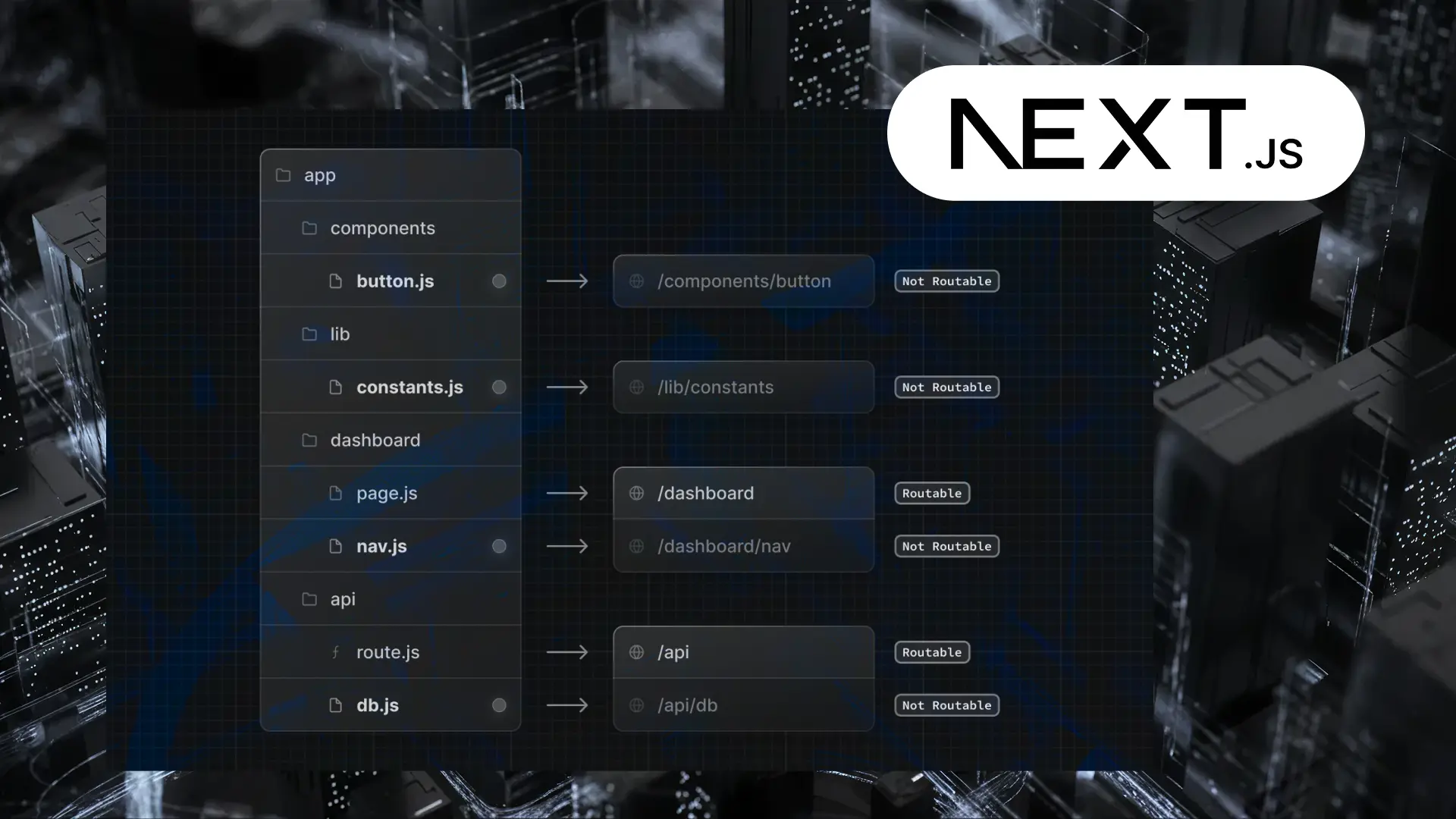Table of Contents
How to Build a Mobile Banking App A Complete Guide
Author

Subject Matter Expert


Date

Book a call
How to Build a Mobile Banking App? A Complete Guide
Key Takeaways:
- 76%+ of Americans now bank via mobile, making mobile banking apps like Chime the new industry benchmark.
- A feature-rich mobile banking app takes 4–12 months to build, with costs ranging from $20K to $250K+.
- Top compliance needs include KYC, AML, PCI DSS, GDPR, and U.S. regulatory frameworks.
- MVP-first, API-driven, and security-by-design development ensures faster GTM and user trust.

Why Building a Mobile Banking App Is Crucial in Today’s Fintech Market?
- 150+ mobile banking interactions per user per year – McKinsey calls mobile the new banking branch.
- 67M+ app downloads in Q4 2024 alone – the demand isn’t slowing down.
- $600B+ spent annually by banks on tech upgrades – because no one wants to be left behind.
- 65% of adults now complete financial tasks via apps – from tracking credit to sending remittances.
- 92% use digital payments – and over 60% prefer in-app spending.
How Does a Mobile Banking App Like Chime Work?
A mobile banking app like Chime operates through a well-orchestrated user journey, blending speed, security, and usability into one seamless financial experience. Here is how the journey unfolds, from the moment users download the app to their everyday banking tasks:

1. Sign-Up and Onboarding
Traditional Banking: Fill out 12 pages of paperwork. Provide three forms of ID. Wait for approval. Schedule another appointment. Hope the system works.
2. Digital KYC and Identity Verification
3. Opening Account and Initial Deposit
4. Spending and Banking Services
- Real-time balance updates
- Spending insights
- Bill payments
- Peer-to-peer transfers
- Mobile check deposits
- ATM locator for fee-free withdrawals
5. Alerts, Automation, and Notifications
- Instant push notifications for every transaction
- Low balance warnings
- Bill due date reminders
- Automated savings triggers (e.g., “Save When You Get Paid”)
Bonus Capabilities
- Security: Multi-layered, including fingerprint/face ID, OTPs, and auto timeouts.
- Support: In-app live chat, help center, and account management tools.
- Savings Tools: Round-up features, goal setting, and high-yield savings options.
- No Fees: No overdraft or monthly charges, unlike traditional banks.
Why Consider Building a Mobile Banking App?
Building a Mobile Banking App: A Step-by-Step Process
Building a mobile banking app requires a clear strategy, regulatory compliance, secure architecture, and user-focused design. It starts with understanding your market and users.

1. Market Research & Strategic Planning
2. Define Your Unique Value Proposition (USP)
3. Regulatory Compliance & Licensing Consultation
4. Technology Stack Selection & System Architecture
- Swift (iOS), Kotlin (Android), or Flutter / React Native for cross-platform builds
- PostgreSQL or MongoDB (with encrypted fields)
- AWS, GCP, or Azure with containerization (Docker, Kubernetes)
6. UI/UX Design
7. Frontend & Backend Development (MVP Build)
- Onboarding & KYC workflows
- Real-time account access
- Balance & transaction views
- Fund transfers & bill pay
- Card controls & wallet integration
- Push notifications & alerts
8. Integrate Essential Banking Features Thoughtfully
9. Run Extensive QA and Beta Testing.
10. Launch & Go-to-Market Activation
11. Ongoing Maintenance, Feature Rollouts, & Growth Ops
Must-Have Features for a Mobile Banking App
Modern banking apps are built for speed, clarity, and control. To stay relevant, every feature from onboarding to alerts must deliver real-time value with zero friction. The list below outlines the essentials that define successful neobanks and digital-first platforms.

1. Seamless Onboarding & Login
2. Real-Time Dashboard & Balance Updates
3. Mobile Check Deposit
4. Bill Payment & Peer Transfers
5. Savings & Round-Up Tools
6. Transparent Fees or Fee-Free Banking
7. Security & Two-Factor Authentication
8. Smart Alerts & Notifications
9. In-App Customer Support
10. ATM Locator
11. Card Management Basics
12. Push-to-Card / Instant Payouts
Advanced Features
1. Direct In-App Card Controls
2. Instant Card Replacement Request
3. Virtual Debit and Credit Cards
4. Wallet Integration
5. Cashback and Rewards
6. Multi-Account and Joint Access
7. Personalization
8. UPI or Instant Pay Integration (Region-Specific)
9. Cardless Withdrawals
10. Voice-Activated Commands
11. Real-Time Fraud Alerts
12. Crypto Wallet Support
13. Loan and Credit Line Tools
14. Gamified Financial Habits
| Feature | Category | Differentiator vs Traditional Apps |
|---|---|---|
| Seamless Onboarding & Login | Must-Have | Instant KYC, biometric login vs paper-heavy onboarding and branch visits |
| Real-Time Dashboard & Balance Updates | Must-Have | Live transaction tracking vs delayed batch updates |
| Mobile Check Deposit | Must-Have | Deposit via phone camera vs visiting physical branches |
| Bill Payment & Peer Transfers | Must-Have | Real-time peer payments vs manual bank transfers with delays |
| Savings & Round-Up Tools | Must-Have | Automated goal-based saving vs manual savings setup |
| Transparent Fees or Fee-Free Banking | Must-Have | Clear in-app fee visibility vs hidden charges in statements |
| Security & Two-Factor Authentication | Must-Have | Biometrics, OTPs, instant lock vs password-only security |
| Smart Alerts & Notifications | Must-Have | Custom push alerts vs SMS/email delays |
| In-App Customer Support | Must-Have | Built-in live chat & contextual help vs IVR and long call waits |
| ATM Locator | Must-Have | GPS-enabled finder vs static branch/ATM lists |
| Card Management Basics (freeze/unfreeze, PIN reset, reissue) | Must-Have | Instant in-app controls vs call center dependency |
| Push-to-Card / Instant Payouts | Must-Have | Immediate gig/freelancer payouts vs standard 2–3 day settlements |
| Virtual Debit & Credit Cards | Advanced | Instant digital issuance vs waiting for physical card |
| Wallet Integration (Apple Pay, Google Pay) | Advanced | Contactless payments vs limited physical card use |
| Real-Time Fraud Alerts | Advanced | Instant suspicious activity alerts vs delayed fraud detection |
| Voice-Activated Commands | Advanced | Voice-driven financial actions vs manual navigation |
| Gamified Financial Habits | Advanced | Engagement-driven savings challenges vs static interest-based saving |
| Crypto Wallet Support | Advanced | Buy/sell crypto in-app vs external platforms needed |
| Loan & Credit Line Tools | Advanced | Self-serve loan management vs branch-heavy processes |
| Cardless Withdrawals | Advanced | QR/OTP withdrawals vs card dependency |
Tech Stack Required to Build a Mobile Banking Application
Creating a secure, scalable, and regulatory-compliant mobile banking app like Chime demands more than just picking tools—it requires a strategic, modular technology architecture that prioritizes performance, user trust, and extensibility. Below is a comprehensive breakdown of the typical tech stack for building such an app, aligned with fintech-grade standards.
| Layer | Tools & Frameworks | Purpose / Highlights |
|---|---|---|
| Frontend | React NativeSwift (iOS), Kotlin (Android) | Unified UI, biometric auth, accessibility, native capabilities |
| Backend | Node.js + ExpressPython (Django / FastAPI)Go / Java (optional) | Event handling, fraud detection, high-performance services |
| Database & Storage | PostgreSQL / MySQLMongoDBRedisS3 / Azure Blob | Secure transaction data, logs, session caching, encrypted KYC storage |
| Infrastructure | AWS / Azure / GCPDocker + KubernetesGitHub Actions / Jenkins | Scalable, cloud-native deployments, CI/CD pipelines |
| Security | TLS 1.3 / AES-256OAuth 2.0 / OpenID ConnectJWTRASP / ATSCompliance: GDPR, PCI-DSS, CCPA | End-to-end encryption, user auth, runtime protection, regulatory compliance |
| Third-Party Integrations | Plaid / YodleeStripe / BraintreeFirebase / Twilio / SendGrid | Banking data, payments, real-time alerts |
| Analytics & Monitoring | Mixpanel / Amplitude / FirebasePower BI / LookerELK Stack / Grafana + Loki | User behavior, operations dashboard, diagnostics |
| DevOps & Testing | GitHub / BitbucketBrowserStackCloudflare / CloudFront | Version control, cross-device QA, edge CDN & TLS termination |
1. Frontend Development
- React Native: Ideal for a unified codebase across iOS/Android. It offers hot reloading, strong community support, and native performance when correctly tuned — great for startups looking to scale fast.
- Swift (iOS) / Kotlin (Android): Choose native when you need low-level OS access (e.g. Face ID, Apple Pay, Secure Enclave) or high-fidelity animations. Better suited for institutions prioritizing performance and precision.
- Biometric auth (Face ID/fingerprint)
- Real-time balance refresh
- Accessibility-optimized UI components
2. Backend Development
- Node.js + Express: Great for event-driven architectures (alerts, queue processing, P2P workflows). Perfect for rapid iteration.
- Python + Django / FastAPI: Excellent for fraud detection, transaction analytics, and AI-driven user insights.
- Go / Java (optional): Add these when milliseconds matter — e.g., for credit scoring, risk engines, or payment processing microservices.
- Break into modular services with GraphQL or REST.
- Use circuit breakers and queue-based retries.
- Follow 12-Factor App principles.
3. Database & Storage
- PostgreSQL / MySQL for core banking logic, transaction records, and KYC.
- MongoDB for behavior tracking, in-app settings, and logs.
- Redis as your caching layer — session states, real-time balance previews.
- S3 / Azure Blob for encrypted doc storage (KYC uploads, audit exports).
4. Cloud Infrastructure & Hosting
- AWS / Azure / GCP: Choose based on data residency, team familiarity, and SLAs.
- Docker + Kubernetes: Decouple services (KYC, alerts, P2P) for isolated scaling.
- CI/CD Pipelines (GitHub Actions / Jenkins): Enforce automated testing, code quality, and audit-friendly deploy workflows.
5. Security Architecture
- TLS 1.3 / AES-256 for transport and storage encryption
- OAuth 2.0 + OpenID Connect for authentication flows
- JWTs for stateless access control
- Cloudflare / AWS Shield for WAF and DDoS protection
- Runtime App Self-Protection (RASP) for runtime threat detection
- ATS for iOS and Device Integrity Checks for jailbreak/root detection
6. Third-Party Integrations
- Plaid / Yodlee: Bank account linking + financial data aggregation
- Stripe / Braintree: Card payments and payout workflows
- Firebase / Twilio / SendGrid: Notifications, OTPs, and real-time alerts
7. Analytics & Reporting
- Mixpanel / Amplitude / Firebase: Funnel tracking, churn signals, LTV analytics
- Power BI / Looker / Tableau: Internal ops dashboards
- ELK / Grafana + Loki: Log monitoring, release diagnostics, anomaly tracking.
8. DevOps, Versioning & Device Testing
- GitHub / Bitbucket: PR-based workflows, release approvals, rollback safety
- BrowserStack: Cross-device QA automation
- Cloudflare / CloudFront: Asset caching, edge CDN, TLS termination
Real-World Examples of Successful Mobile Banking Apps
1. P2P Payment-Focused Apps
Venmo
Zelle
2. Full-Service Neobanks
Varo Bank
Utoppia
3. Multi-Utility Finance Apps
Cash App
How Much Does It Cost to Build a Mobile Banking App Like Chime?
Mobile Banking App Development Cost by Complexity
| Complexity Level | Estimated Cost | Timeline | Key Inclusions |
|---|---|---|---|
| Basic MVP | $20,000 – $30,000 | 4–6 weeks | User onboarding, real-time credit check, split payments, push notifications, 1 Payment API, manual KYC, standard encryption |
| Mid-Level App | $40,000 – $60,000 | 10–12 weeks | All MVP features + automated KYC/AML, repayment tracking, promo codes, tokenization, scoring engine
|
| Full-Scale App | $60,000 – $250,000+ | 20–36+ weeks | All above + AI fraud engine, CRM/ERP connectors, multilingual UI, biometric login, PCI DSS/GDPR/ISO compliance, advanced analytics, loyalty wallet |
Factors That Influence Mobile Banking App Development Costs

1. Feature Complexity
2. Third-Party APIs
3. Security and Compliance
4. Design Customization
5. Platform and Architecture Choices
- Cross-platform tools like Flutter can reduce cost by 30–40%.
- Backend infrastructure, especially if modular and cloud-native (e.g., microservices on AWS/GCP), ensures scalability but adds cost early on.
6. Development Team Location
- Asia: $25–$40/hr
- Eastern Europe: $50–$55/hr
- Western Europe: $80–$90/hr
- US/Canada: $95–$100/hr
7. Testing and Quality Assurance
- Functional and security testing,
- Regression testing across devices,
- Load testing,
- Penetration testing,
- Beta feedback implementation.
8. Infrastructure and Hosting
9. Ongoing Support and Iteration
10. Number of Platform Integrations
What are the challenges in building a Mobile Banking App, and how to solve them?
1. Regulatory Compliance
2. Data Security & Fraud Prevention
3. BaaS Integration & Legacy Systems
Compliances in Mobile Banking App Development
Mobile banking and fintech platforms operate under a dense regulatory framework designed to protect consumers, prevent financial crimes, and ensure systemic integrity. Meeting these standards is foundational to trust and long-term scalability.

1. KYC & AML
- Customer Due Diligence (CDD)
- Enhanced Due Diligence (EDD) for High-Risk Users
- Suspicious Activity Reporting (SAR) under FATF and FinCEN (U.S.)
2. Bank Secrecy Act (BSA - USA)
3. Sanctions & Risk Screening
- Sanctions (OFAC, UN, EU)
- Politically Exposed Persons (PEPs)
- Adverse Media and Beneficial Ownership (e.g., U.S. Corporate Transparency Act)
4. Data Privacy Compliance
GDPR (EU)
CCPA (California)
General Practices
- Encrypted data transmission and storage
- User alerts for sensitive activity
- Clear consent and opt-out mechanisms
5. Payment Security
PCI DSS
- Data encryption and firewall protection
- Secure system development
- Access restrictions and regular security testing
Licensing & Institutional Regulation
- Dodd-Frank Act (USA): Enforces consumer protections and credit fairness via the CFPB.
Emerging Global Mandates
- AI Regulation: Ensures transparency, explainability, and human oversight of financial AI systems
- MiCA (EU): Regulates crypto assets, custody, and digital wallet providers
- Open Banking & Cross-Border Interoperability: Promotes API standardization and global payment flow
- NIS2 & DORA (EU): Enforce operational resilience and IT risk controls
- ESG Compliance: Increasing focus on ethical finance and sustainability disclosures
Why GeekyAnts for Mobile Banking App Development?
Our Strengths in Fintech & Neobank Development
- Cross-Platform App Development - We build robust apps on iOS and Android using React Native and Flutter. With shared codebases, you get consistent UX, faster go-to-market, and optimized development costs without sacrificing performance.
- MVP-First Agile Approach - We help fintech startups launch investor-ready MVPs in 10–12 weeks. From rapid prototyping to scalable backend foundations, we ensure cost-efficiency with the flexibility to evolve as you grow.
- Security-First Architecture- Our apps are built with AES-256 encryption, OAuth 2.0, JWT, secure APIs, and rigorous audits. Every component is designed to meet KYC, AML, and PCI DSS standards from day one.
- Seamless Integrations - We enable secure connections to payment gateways, KYC providers, third-party APIs, and core banking platforms. Whether it’s real-time UPI, digital wallet sync, or cross-border capabilities- we make it work.
- Custom Dashboards & Wallets - From consumer-facing apps to admin panels, we design modular dashboards and flexible systems. Our interfaces power real-time insights, manage risk, and streamline user support.
- Ongoing Support & AI Innovation - We do not stop at launch. GeekyAnts teams continue to support, optimize, and enhance your banking product. Our AI capabilities (LlamaIndex, GPT, custom chatbots) future-proof your platform with personalization and automation.
Real-World Results of our Fintech Expertise
1. AI-Powered Mobile App Upgrade for Indian Public Sector Bank
2. Fintech Mobile Web App for Global Payment Processor
3. Financial Literacy App for Youth
The Future of Banking Is Digital-First
FAQs about Mobile Banking Apps
1. How long does it take to build a Chime-like mobile banking app?
2. How can startups ensure data security and user trust?
3. Can I integrate APIs like Plaid or Galileo?
4. What UI/UX best practices improve engagement in mobile banking apps?
- Keep it simple: Minimal clutter, clear CTAs
- Mobile-first: Fast loads, responsive design
- Personalized journeys: Insights, goals, tailored nudges
- Accessibility: Color contrast, screen reader compatibility
- Visual hierarchy: Easy-to-follow navigation
5. What compliances are essential for neobank apps?
- KYC/AML (fraud prevention)
- PCI DSS (card security)
- GDPR & CCPA (data privacy)
- BSA & Dodd-Frank (U.S. financial regulations)
6. What monetization models work best for mobile banking applications?
- Interchange fees
- Premium subscriptions
- Lending services
- Affiliate partnerships
7. How do I choose the right development partner for my fintech startup?
- Proven fintech case studies
- Expertise in KYC, AML, PCI DSS, GDPR
- Cross-platform and MVP-first delivery
- Agile development and clear communication
- Transparent pricing and post-launch support
Dive deep into our research and insights. In our articles and blogs, we explore topics on design, how it relates to development, and impact of various trends to businesses.





